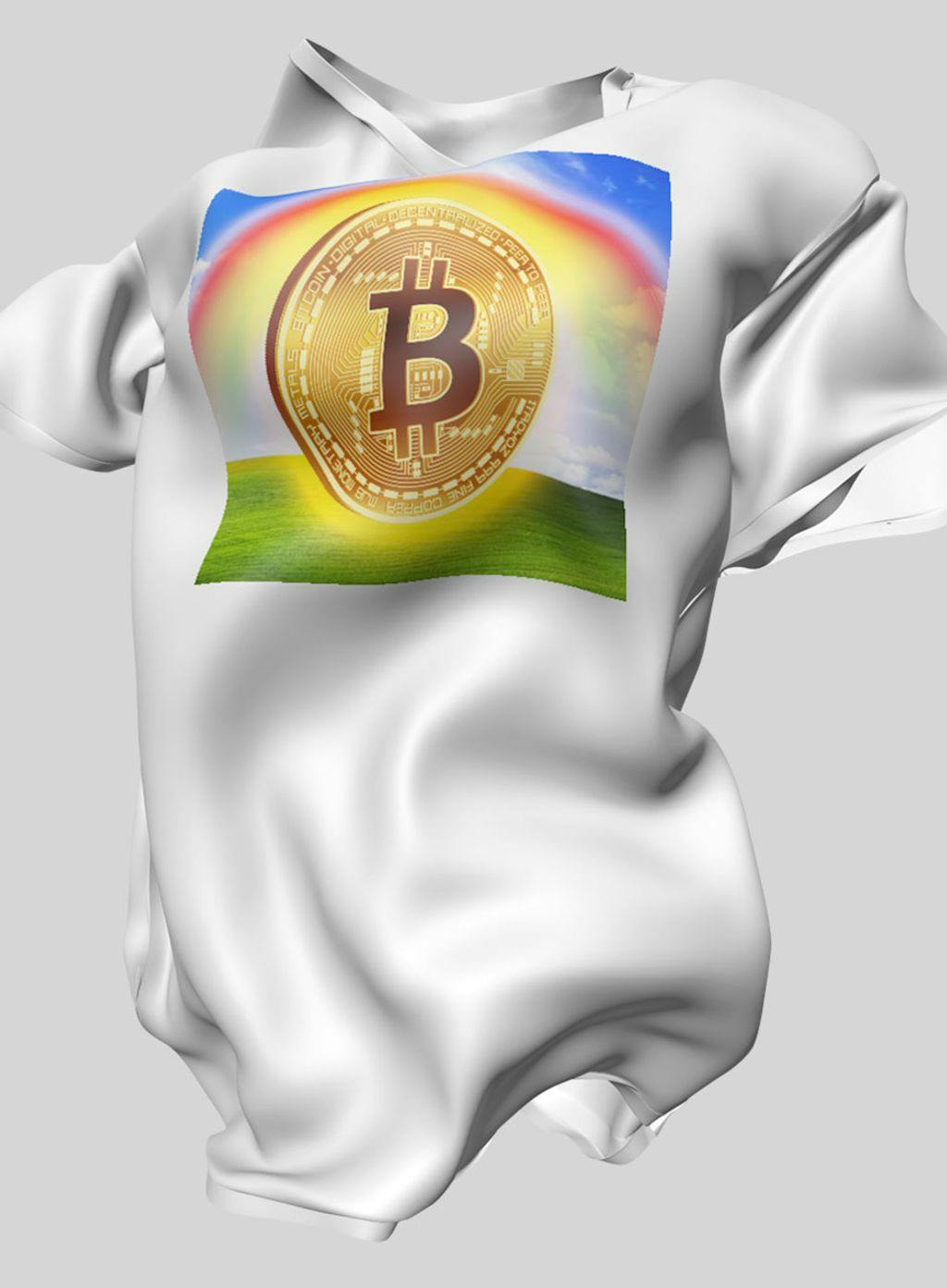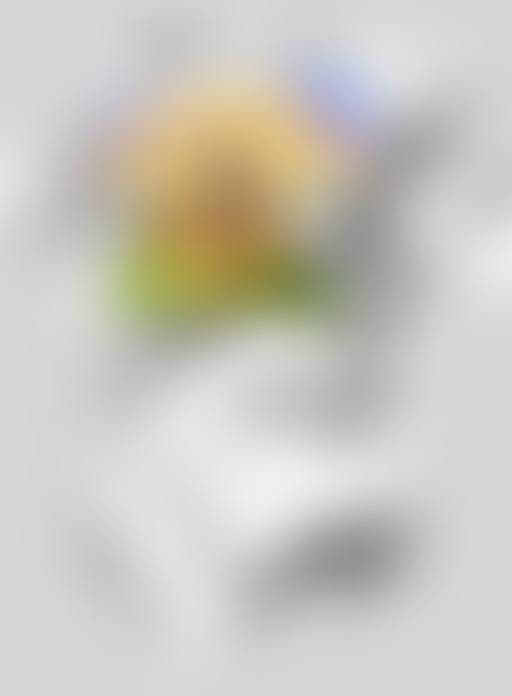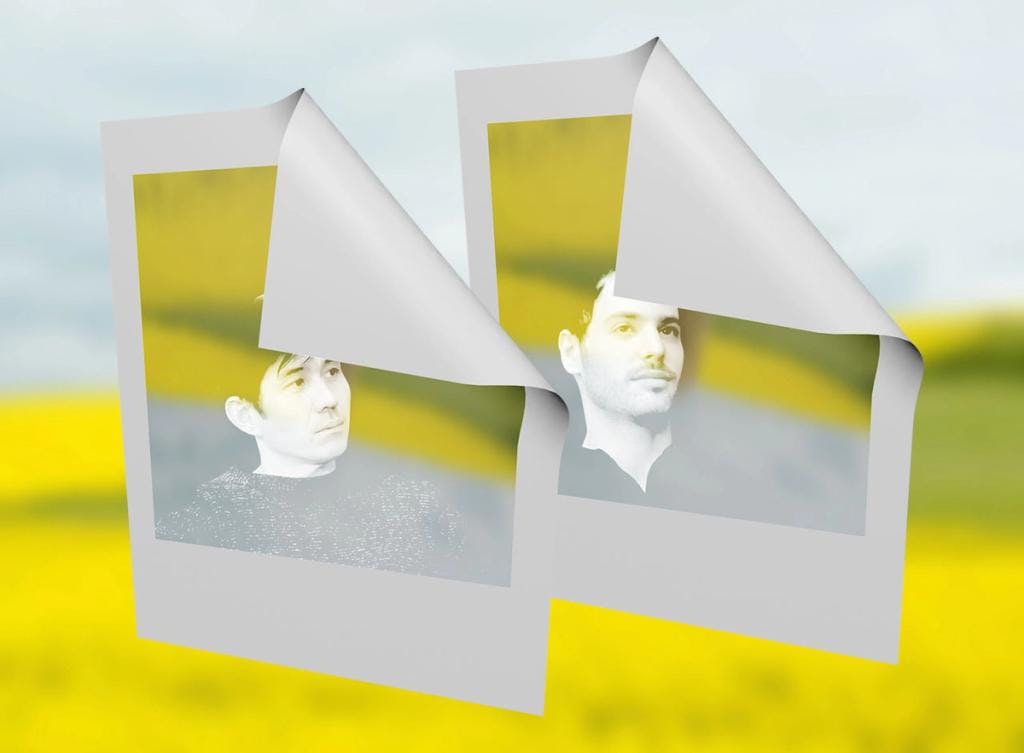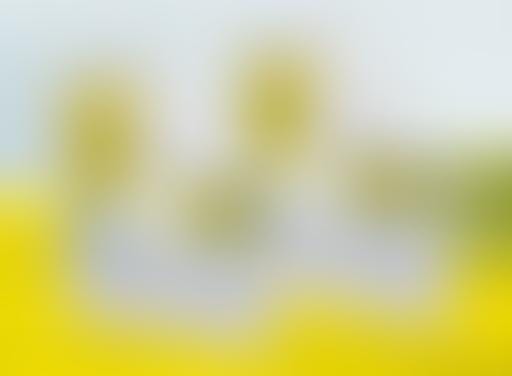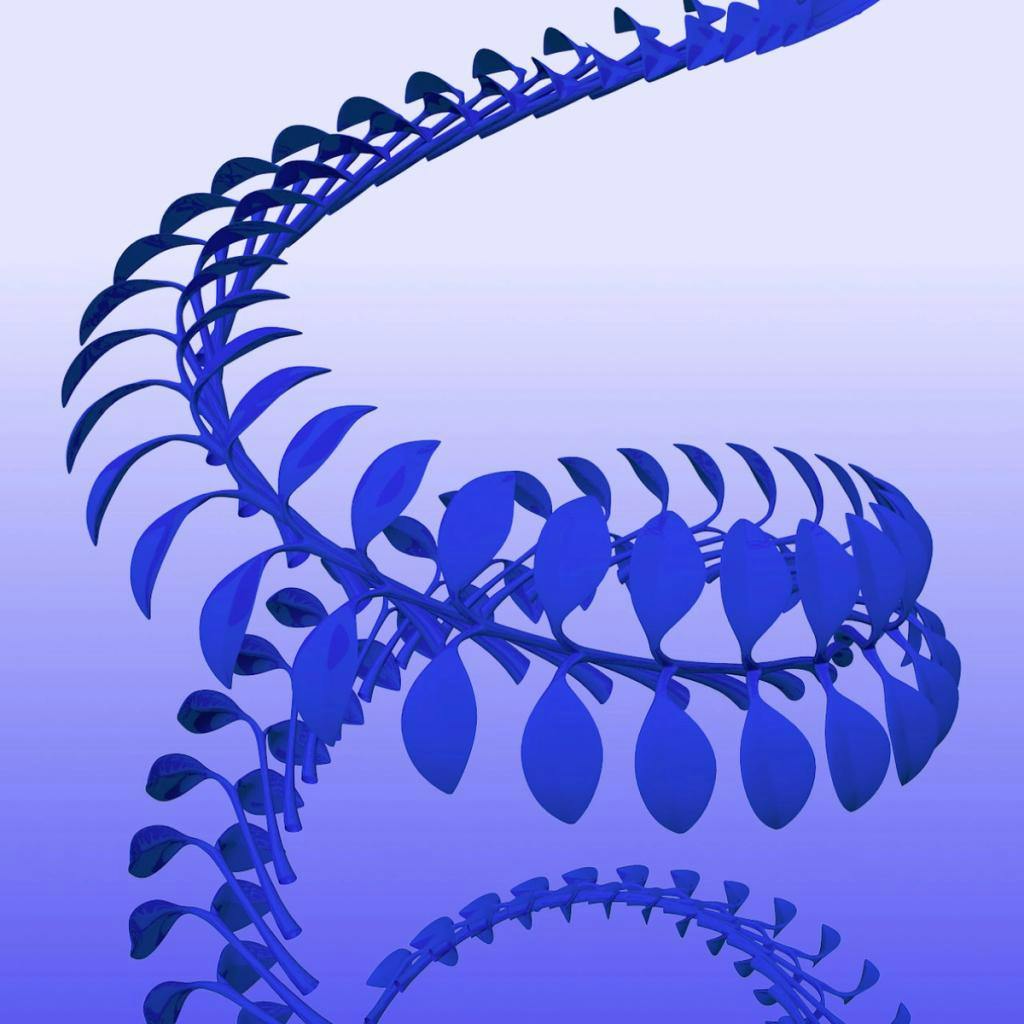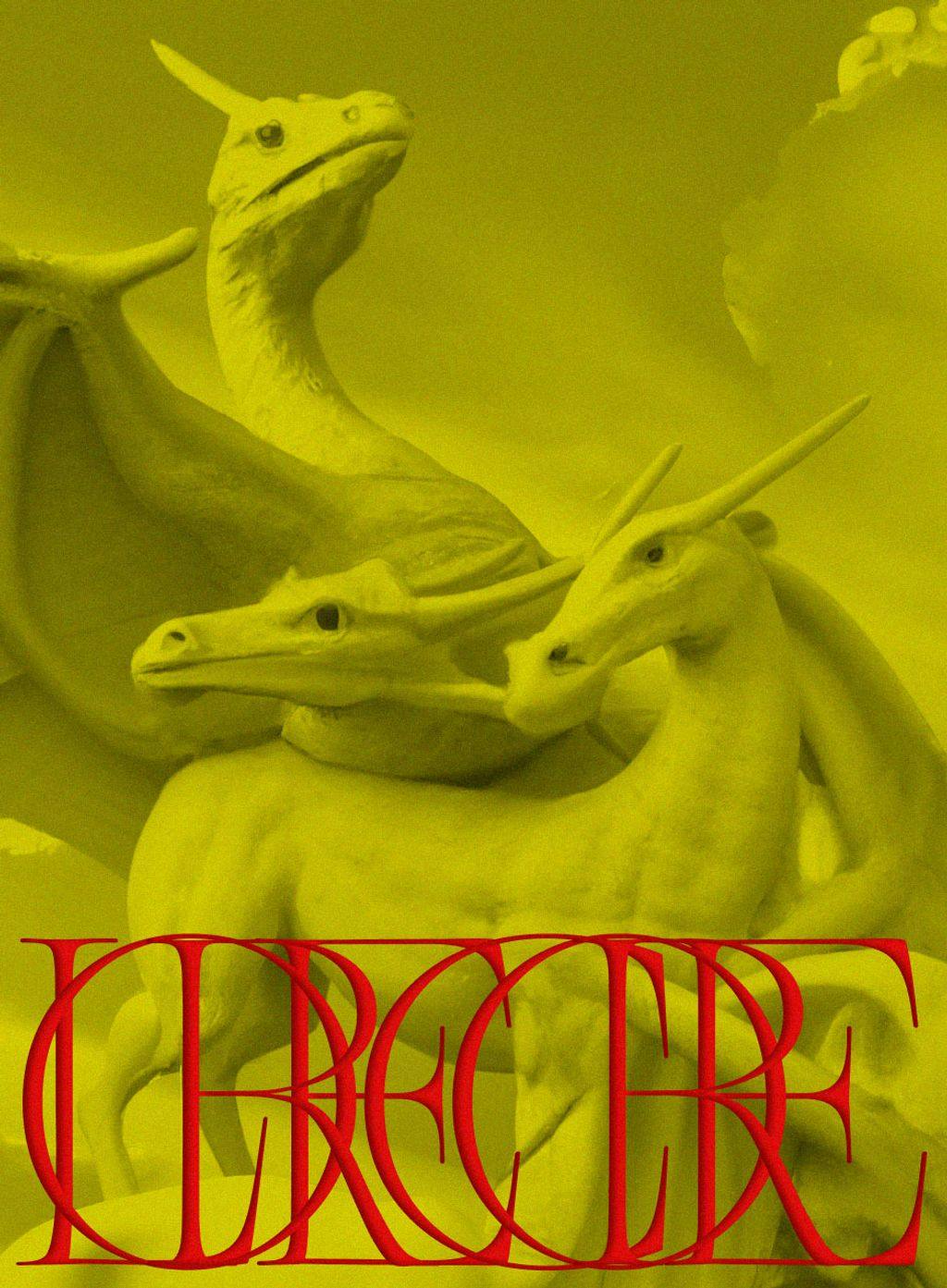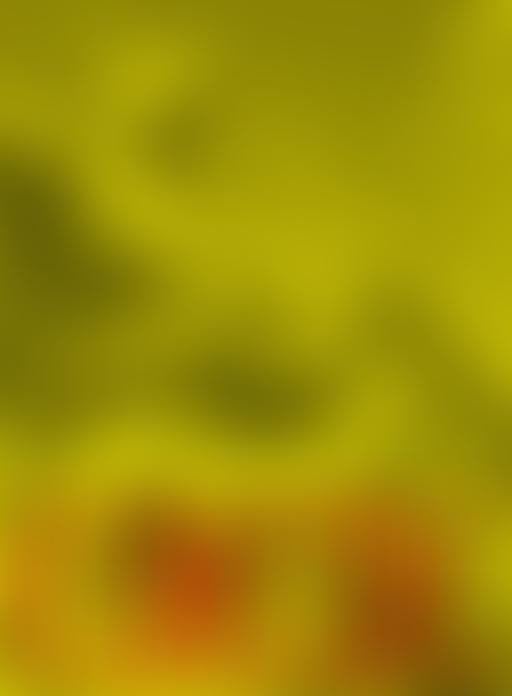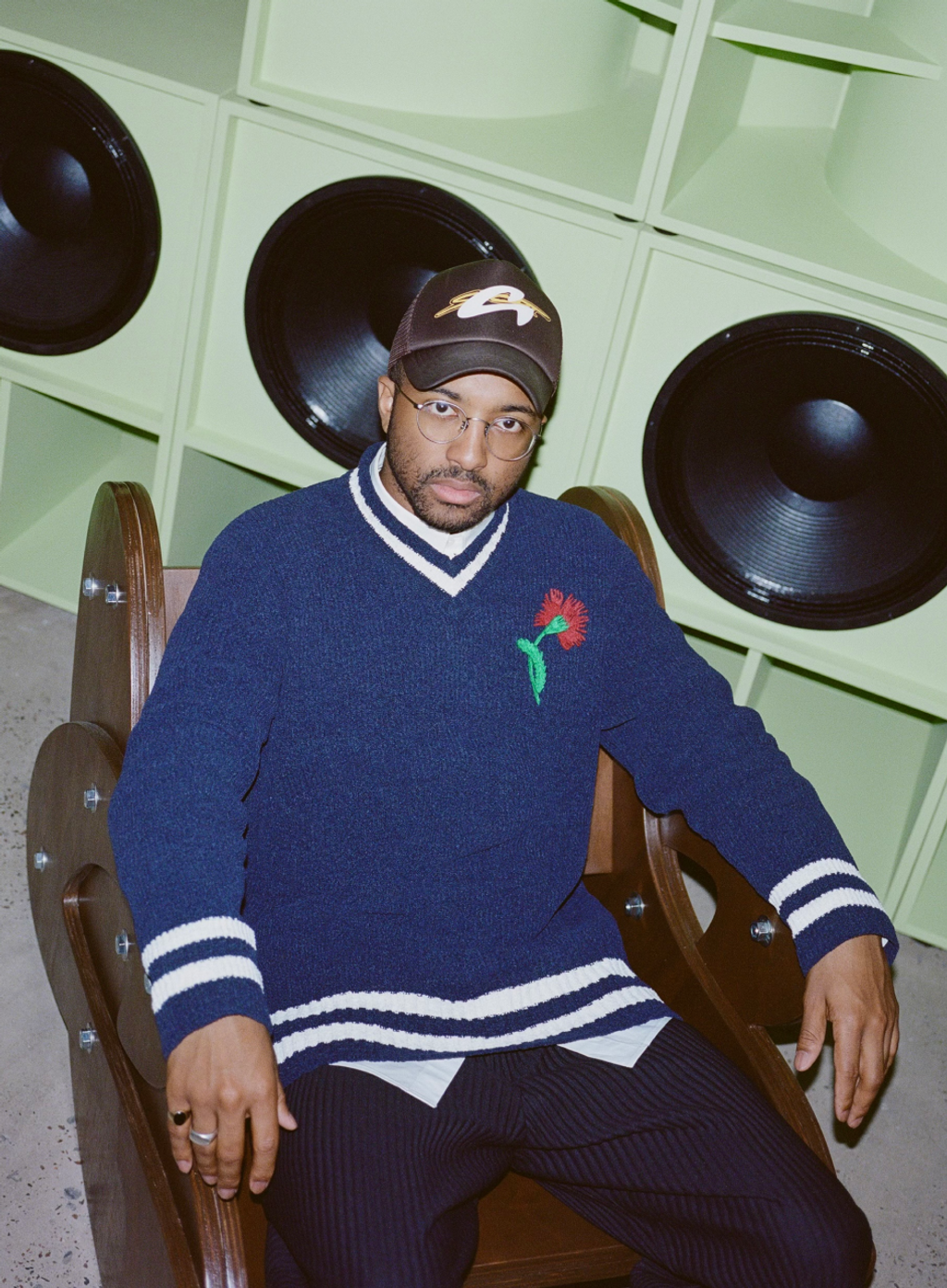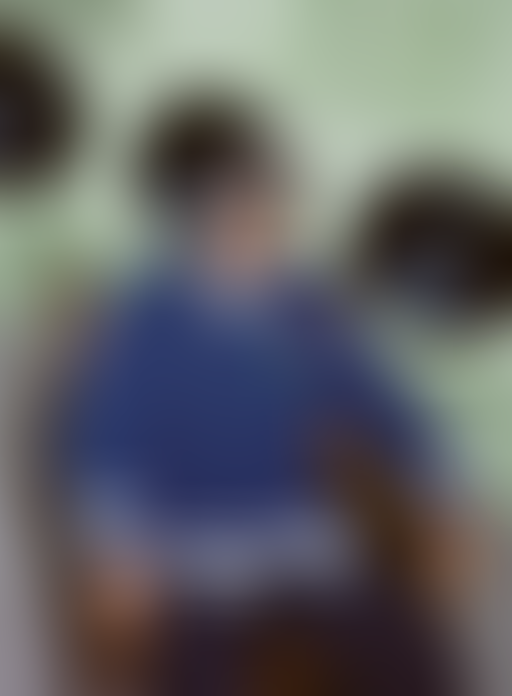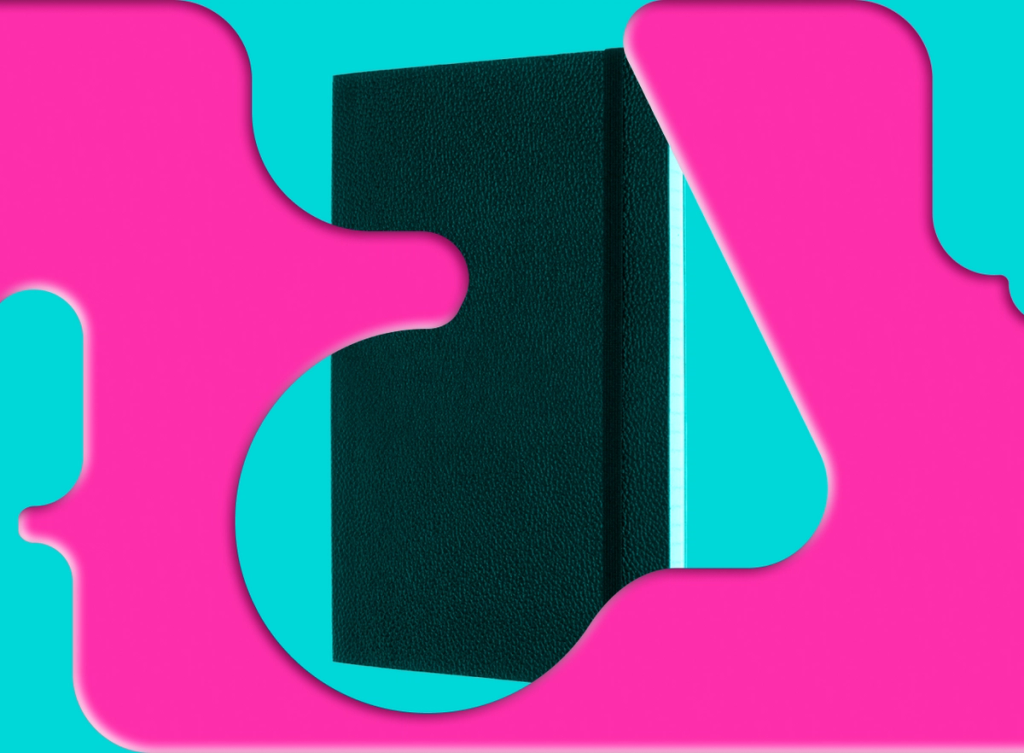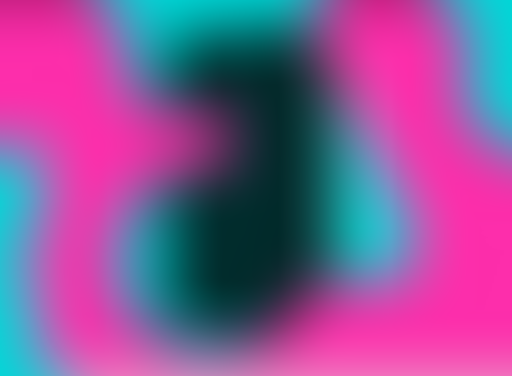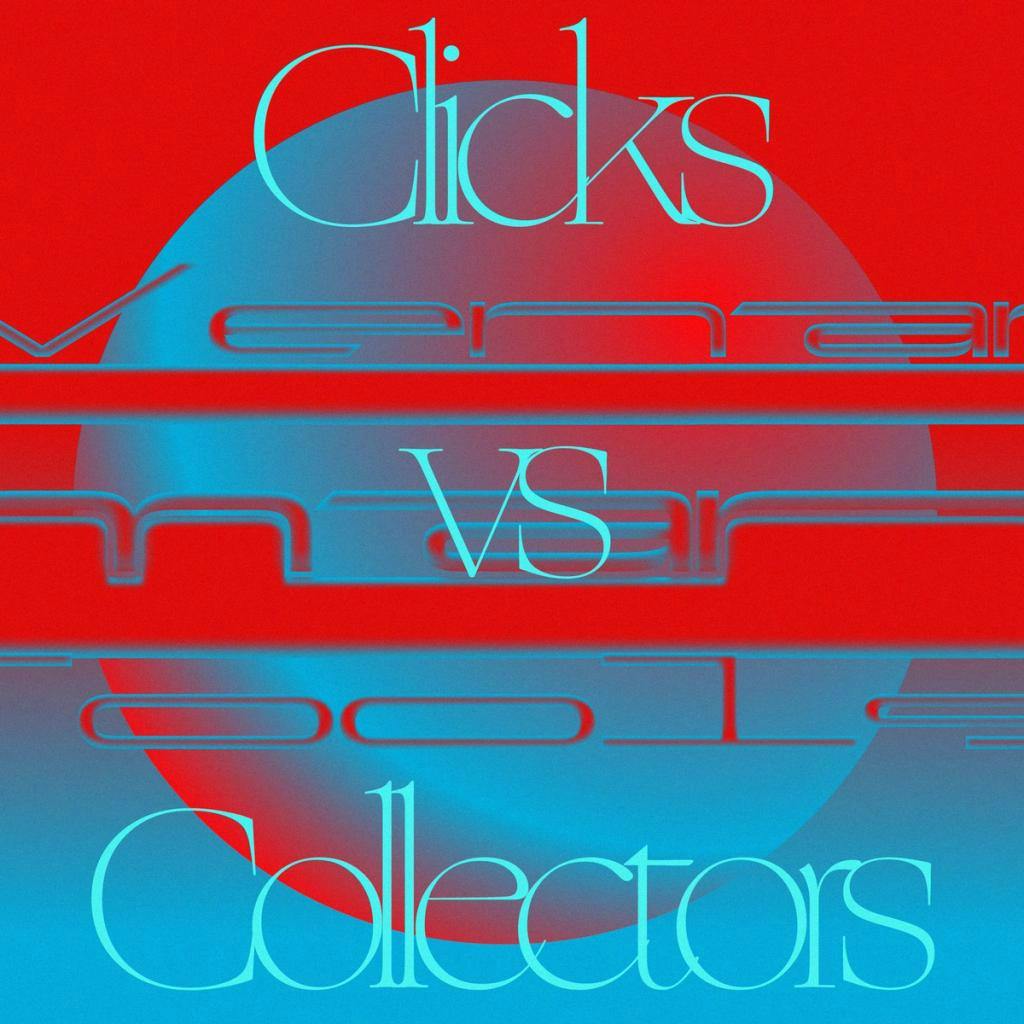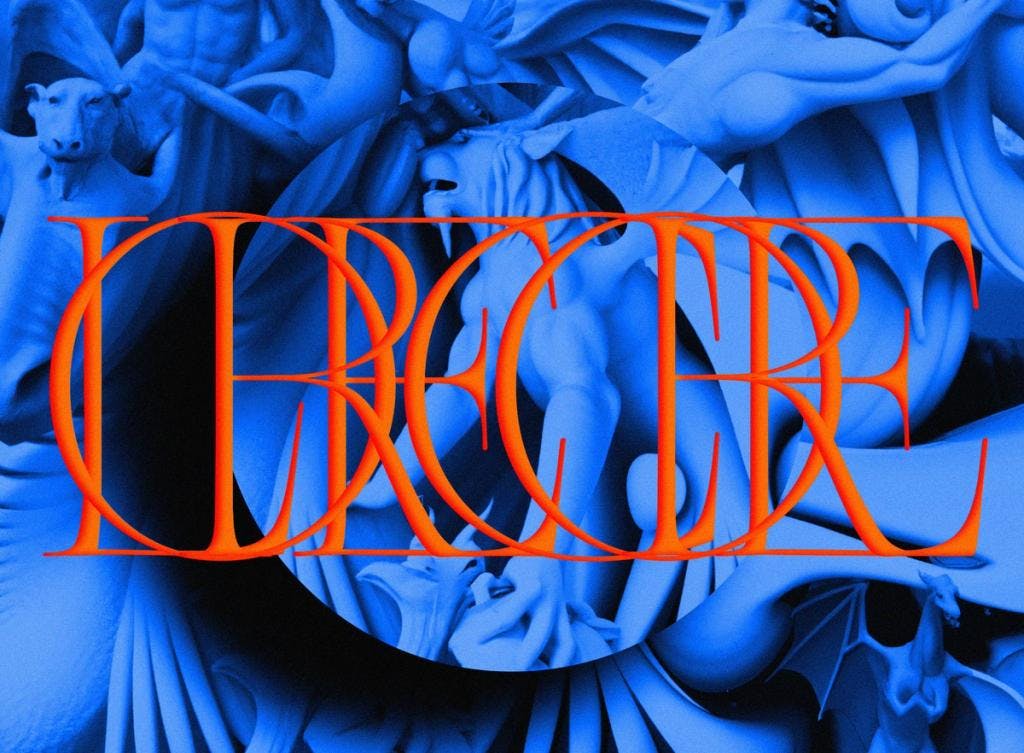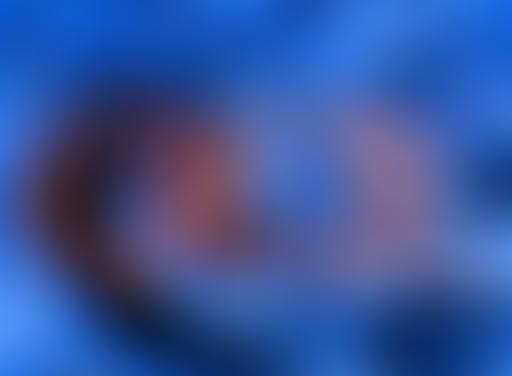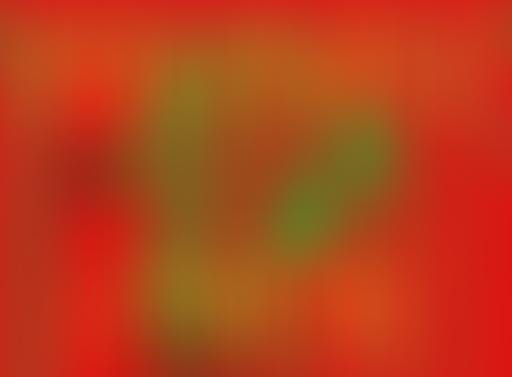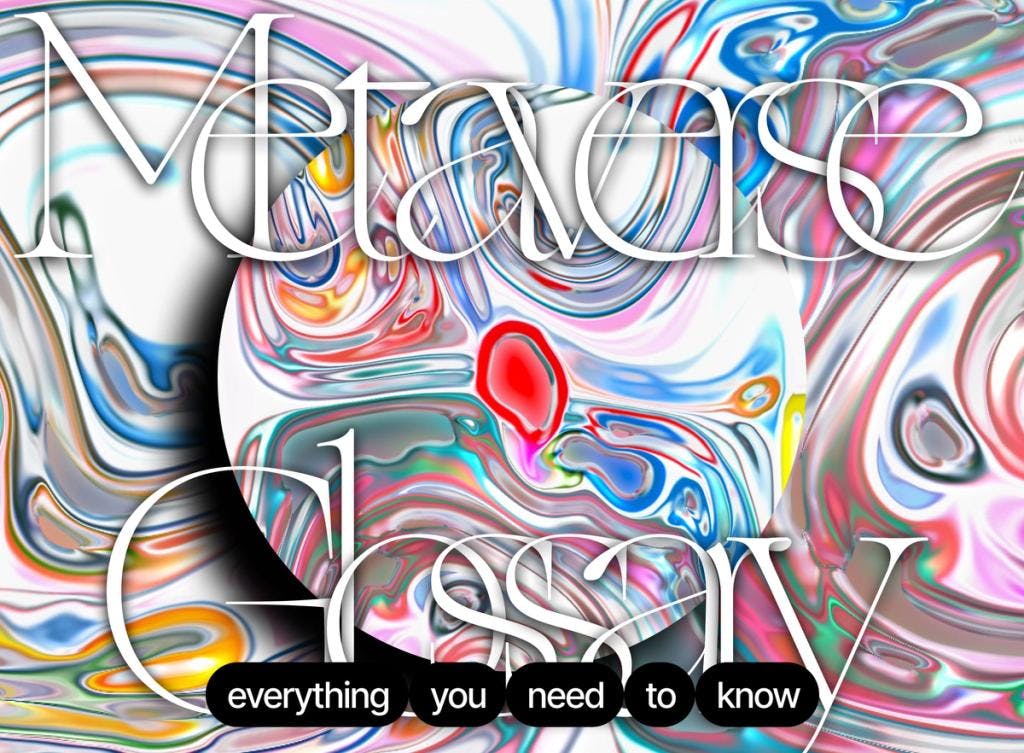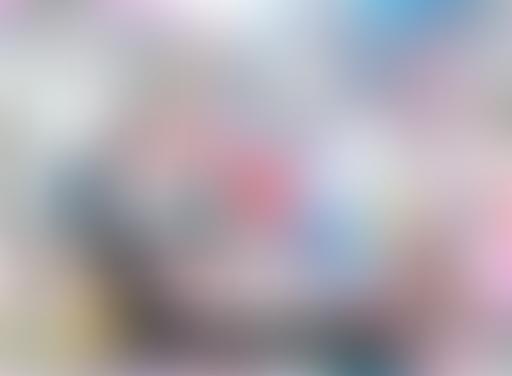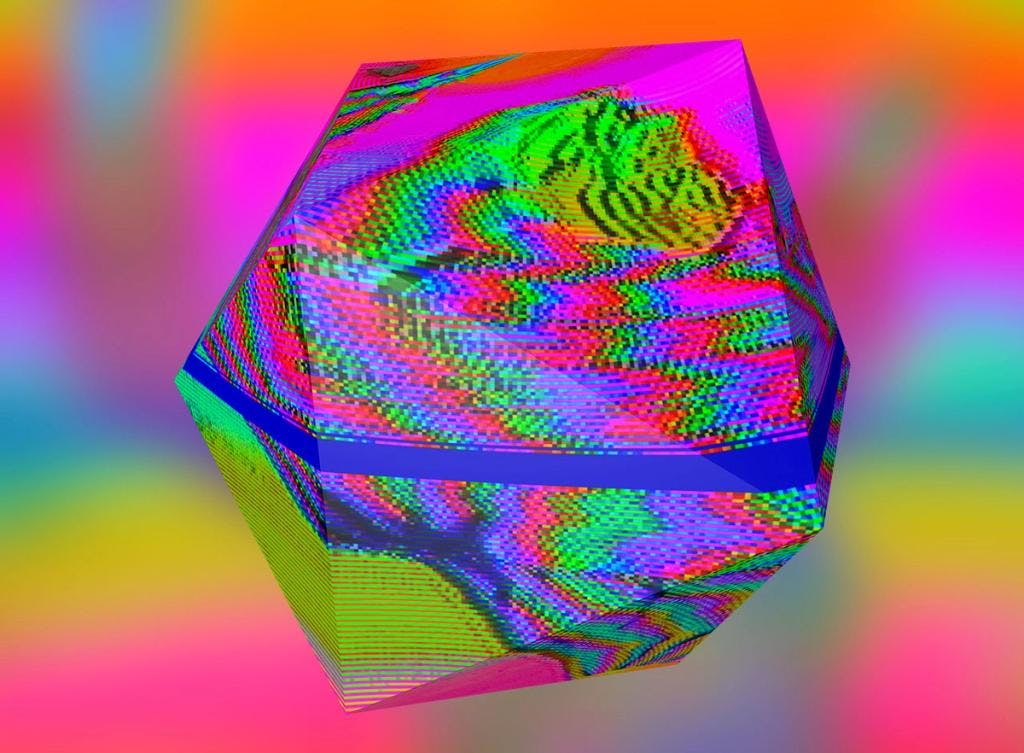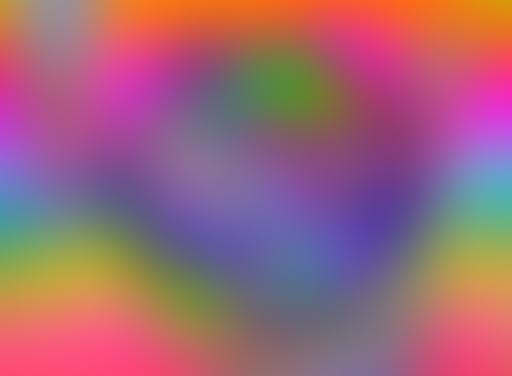


DISUnveilstheProfound
DIS Unveils the Profound
In their final installment, DIS turns to artists bringing a clarifying focus to the semiotic overload of digital life
For the last installment of our summer picks, we bring to you a range of projects with vastly different sensibilities and goals, from creating automated ecosystem resilience frameworks to offering you a single arresting digital rose. Glued to our screens and bombarded as we are with media, artists can help us sift through and make sense of it all, especially on the internet, although it seems futile to even talk about the internet as if it were somehow distinct from real life.
For much of the history of postinternet art, practitioners, including DIS, circulated the work they had labored over online, hoping for the best case scenario—that it would spread and be reposted, even if it was uncredited. It’s no surprise that much of the work from these innovators was appropriated, often without remuneration, ending up on the mood boards of big-budget fashion brands, advertising firms, and mainstream artists. Some of these artists have now found ways to share and even make a living from NFTs, without losing their roots or their connection with their audiences. While the tools and technologies to make NFTs are available to everyone, it takes a deep familiarity with the language of the internet to make something interesting or meaningful.
1. terra0
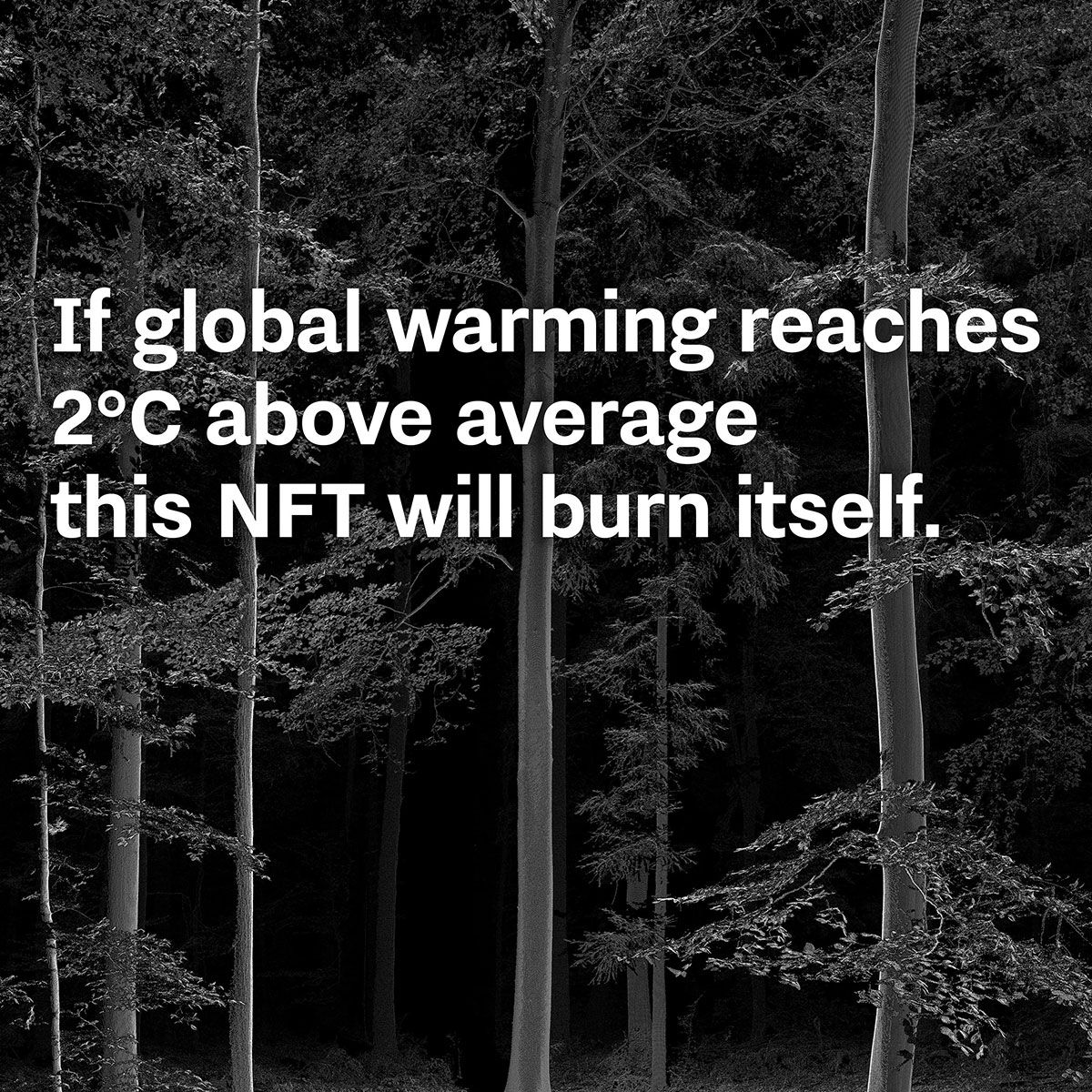
I like to think (and
the sooner the better!)
of a cybernetic meadow
where mammals and computers
live together in mutually
programming harmony
like pure water
touching clear sky.
I like to think
(right now, please!)
of a cybernetic forest
filled with pines and electronics
where deer stroll peacefully
past computers
as if they were flowers
with spinning blossoms.
These lines from Richard Brautigan’s 1967 poem “All Watched Over By Machines of Loving Grace” open terra0’s website. Its description of a technological utopia has come to represent the shift in how computers moved from being seen and used as sinister tools of the Cold War military-industrial complex to vessels for idealistic countercultural dreaming. Others, though, have interpreted Brautigan’s poem as an ironic critique of the unrealistically optimistic hackers, hippies, and futurists of his time.
terra0, founded in 2016 by Paul Siedler, Max Hampshire, and Paul Kolling, is a research and art collective and an evolving prototype for ecosystem resilience frameworks built on Ethereum. From their founding, terra0 has explored how technology can be used to preserve and protect our planetary ecosystem from the ongoing threats that we pose to it, in a way that bears none of the ironic cynicism sometimes attributed to Brautigan.
Their inaugural 2016 white paper proposed a “prototype of a self-utilizing piece of land.” Imagine a forest that is able to sell licenses to log its own trees using automated processes, smart contracts, and blockchain. The forest thus accumulates capital for itself and is able to buy back and expand its land.
The proposal highlights the irony of the hypercapitalist times we live in: a forest must purchase its own freedom through self-commodification, which ends up being the only mode of self-regulation. It is only if forests become economic agents in their own right that they may finally be treated with the respect they deserve given their indispensability for the survival of our ecosystems. The idea may provide a model for conservationists to protect land from human intervention. It also asks the interesting question: how is blockchain symbolic of nature’s ecosystem—and how is it not?
In Two Degrees (2021), terra0 plays with the idea of the NFT as a derivative, or a financial instrument tied to something else (like a derivative betting on the price of steel). Here, however, you are betting on the environment––which, technically, we have already done on a global scale. The NFT contains a scan of a German forest that will disappear if the global temperature rises by more than 2 degrees Celsius, the maximum temperature increase after which it is predicted that the effects of global warming will be disastrous (an oracle smart contract stores the average annual temperature rise as decided by NASA). In the event of such a catastrophe, it is predicted that up to 1.2 billion people will be forced to become climate refugees, while an additional 800 million to 3 billion people will experience chronic water scarcity. Two Degrees mimics the way that other traditional assets’ existence now depends on our ability to manage global warming: for instance, real estate in vulnerable locations such as coasts.
As the IPCC’s goal of a maximum temperature increase of 1.5 degrees by 2050 approaches, Two Degrees could either stand as a testament to our work in preventing a total climate catastrophe or as a reminder of how we’ve failed in our environmental responsibility. Rather than engaging in more individualistic off-grid or return to nature fantasies (no shade to those), terra0 supports visionary work that sees technology—if used correctly, of course—as a way to ensure a sustainable, resilient, and biodiverse future. It sometimes feels like art and entertainment exist to distract us from the disturbing state of our lives and the world. terra0 proposes that we shouldn’t watch the world burn in a comatose condition of helpless doom-scrolling. Two Degrees offers a protocol for other activists, creators, and artists to exert influence and incentivize action.
2. Nomemene
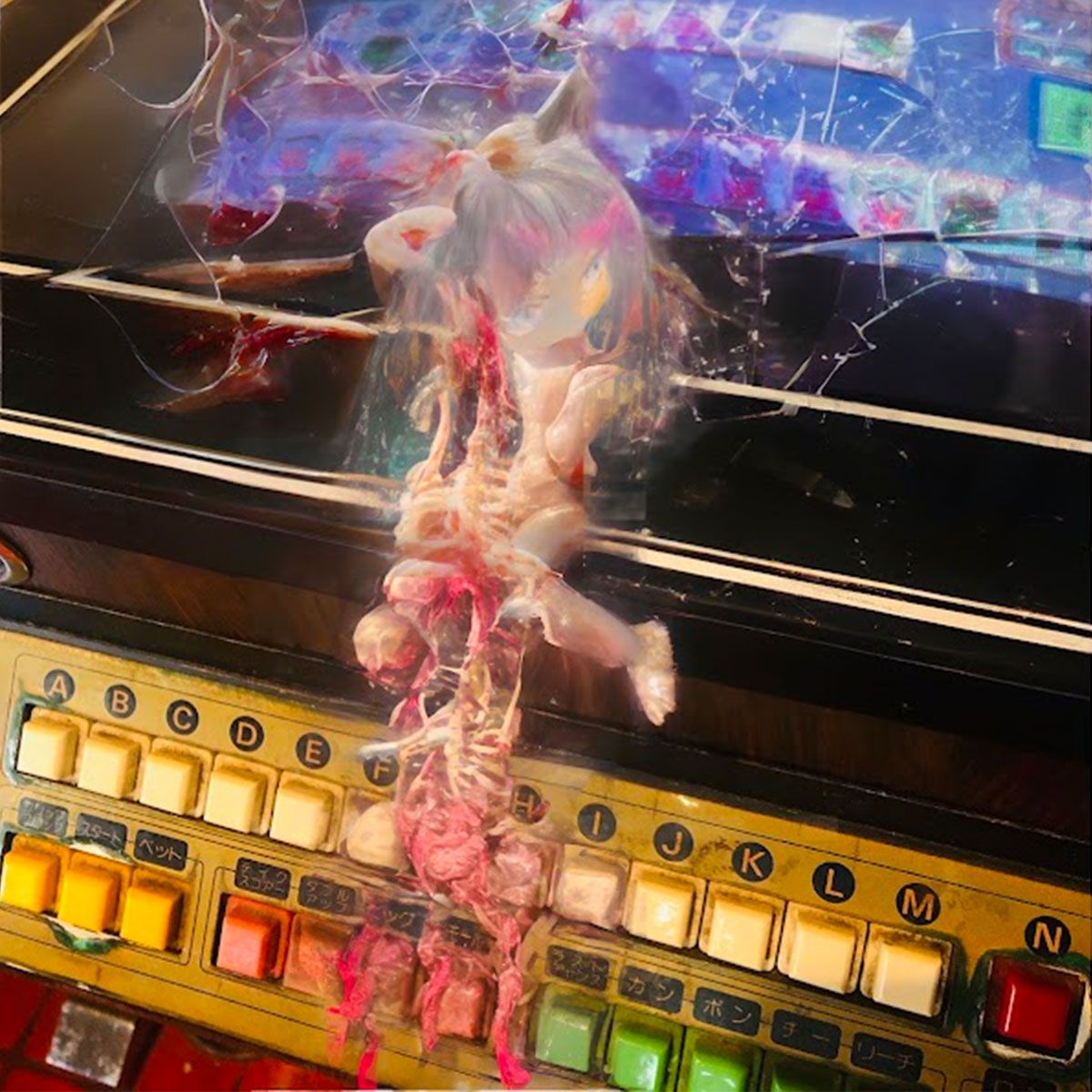
Nomemene’s artworks are fluid and aqueous, as if they were painted with salty ocean water. Or maybe you are just looking at them through teary eyes, but tears of malicious joy or confusion, not pure sadness.
Nomemene, who is based in Japan, is self-taught. Her work was mostly shared on Twitter before it appeared in the NFT-form for the first time in Galerie Yeche Lange’s inaugural exhibition, Tournament for Swollen Hearts Round Un. One of them, A person directing traffic at a construction site (2022), shows a part girl, part bunny, part robot figure standing in an empty landscape holding what appears to be a traffic light pole. Who is she? The blend of human, animal, and robot evokes the potential for a monstrous and literal enmeshing of people and technology. But through Nomemene’s lens, this possibility appears no longer grotesque but rather picturesque: feminine, ethereal pastels and blurred edges soften the blow. In her only English interview to date, Nomemene says, “If there is such a thing as a Guntama, or group soul, I want to be aware of it.” Guntama is the notion that rocks, plants, fish, and animals have one soul as a group, which means that even if one life dies, the soul is not lost.
In I found a fairy! (2022), a sheer-bodied girl sits on a cracked vintage video game console while her skeleton and innards fall out of her body. She doesn’t seem very bothered by this. She nonchalantly looks around and whips her hair. None of Nomemene’s characters seem to have mouths. They don’t need to resort to the falsity of words, they already know what they need to know. Their communication is visual, energetic. Maybe we don’t need mouths. Maybe we should all just shut up. In Seisyoku (2022), a dark gray girl clutches a bouquet while looking straight out at the viewer, positioned between two columns made of liquefied flowers dripping down on either side of her. Is this flower blood being used as paint? The floral motif contrasts with a sort of aggression or judgment in her stance and gaze. A cryptic text fades into the background. Is this a spirit warning us about our future, or a uniquely aesthetic dream?
A lot of NFTs have a childlike quality to them: something cartoonish, anthropomorphic, or goofy. This could be the reflection of a pervasive penchant for techno-animism. Or perhaps collectors enjoy indulging in a particular kind of reminiscence, seeking a lost innocence that is harder to find in traditional analog art. There is an escapist bent to those who spend a lot of time online. Nomemene says, “I always want to get out of my world, and even succeeding after a lot of trial and error, I get a feeling that I just end up in my original world.” That may be the case for her, but since we are each trapped in our worlds, it’s refreshing to interact with someone else’s. For some, it’s even more thrilling to own a little piece of it, as illusory as that might be. Asked about whether she identifies with the characters in her drawings, the artist responded that she relates to “their corelessness and only vanity, inorganic, lazy and arrogant.” There certainly isn’t anything lazy about the execution, though!
3. ESCAPE FROM HOLLYW3IRD (2022) by artschoolreject
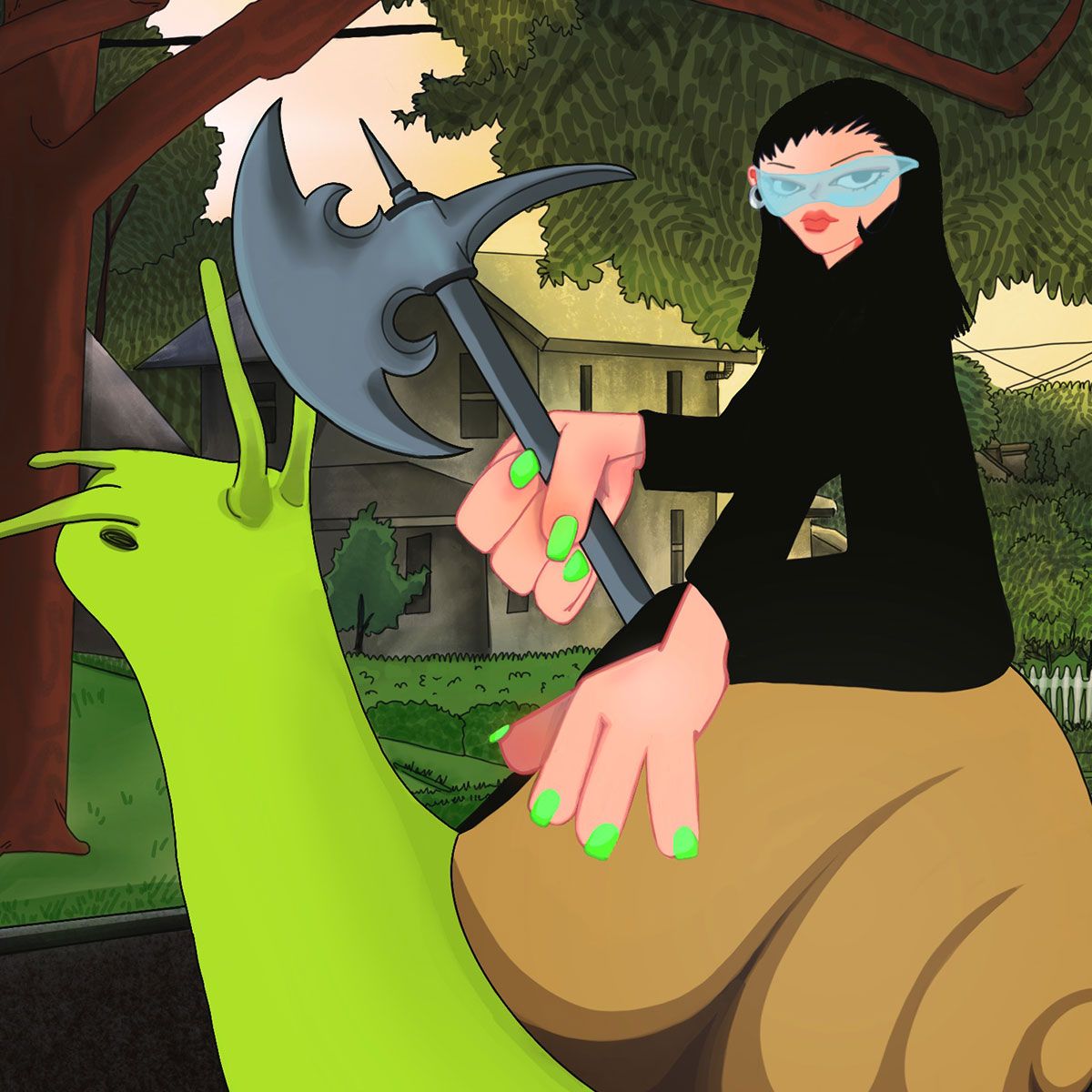
Mysterious femmes populate the world of artschoolreject’s open collection, ESCAPE FROM HOLLYW3IRD. In Going Slow, a girl rides a snail that matches her neon green nail polish while wielding a medieval-looking axe. She was living “too fast” and needs to go slower. The same girl reappears in The Hermit in a lavender cape holding a candle and a pet rat. She is, the NFT description reads, “cultivating an unconscious instinct to leave H0LLYW3IRD.” In The VR Bar, a redhead in a neon blue minidress holds a glass of wine while poutily gazing into a VR headset in a lounge resembling Paul’s Baby Grand in New York. She doesn’t seem very impressed. The perspective of the art, with the small heads and large hands, is reminiscent of the “ultra wide” (0.5x) setting on the iPhone camera, used by baddies worldwide to lengthen the body. These women could be bored LA influencers who escape their TikTok hype houses to otherworldly realms where they can live out cinematic fantasies, like being a gypsy with a rat best friend or a snail-riding forest adventurer.
Indeed, the artist tells us that “H0LLYW3IRD is a collection of artwork where I intended at first to illustrate the absurd experiences I’ve had in Hollywood. Currently, it is growing beyond a reflection of myself and becoming an omnipotent observation of the culture and city creatures I love and hate so much.” She goes on to mention that one of the themes is “highlighting the divine satire in our existence.”
Artschoolreject is planning to release H0LLYW3IRD0S, the concurrent PFP project to ESCAPE FROM H0LLYW3IRD, in 2023.
4. Overworkedman (2021) by nicegirlfriend

Around 114 million cubicle offices exist in the US. But the amount of people working in them post-pandemic has drastically decreased due to WFH. What’s more, NFT and crypto have this promise of freeing people from the chains of cubicle-office-work drudgery. But does it? Even if no one worked in a literal cubicle ever again, and the Gen Z Great Resignation was actually completed, the existential condition of the person who works in a cubicle would be no less relevant.
Despite its meme-y format and ironic undertones, Overworkedman, by Nicegirlfriend, explores the very real drudgery and banality brought on by contemporary labor conditions of those who are slaves to their computers. Pieces like #8 How dare they do this to me and #7 Years of my life…gone show a tear-drenched figure in a drab office, looking as if he had just been fired. Others like #4 “Should of become a park ranger” and #2 “Should of gone to film school” allude to the longing for nature and real-life experience that comes from office work and to the doubt and questioning that haunts such routines. In #3 “Yes Overlord, here is your coffee”, a resignedly obsequious Overworked man brings his boss coffee and reassures him that “No Sir, it's not a girly drink, Sir.” These works are vaguely reminiscent of the post-2008 office anxiety that swept the world, and with the previous two-quarters of negative GDP growth, we are currently in the midst of yet another recession.
The most universally relatable NFT in the collection is perhaps #11 No end to this pain in which a man in a suit with a red face screams at a computer that says “Invalid password.”
The question is: are we relating to overworked man because we, too, are overworked? Or laughing at him because his job is not that hard, he is too beta to get himself out of his condition, his life can’t be that bad, and he is after all, just a man?
5. Polychrome Music (2022) by Rafaël Rozendaal and Legowelt
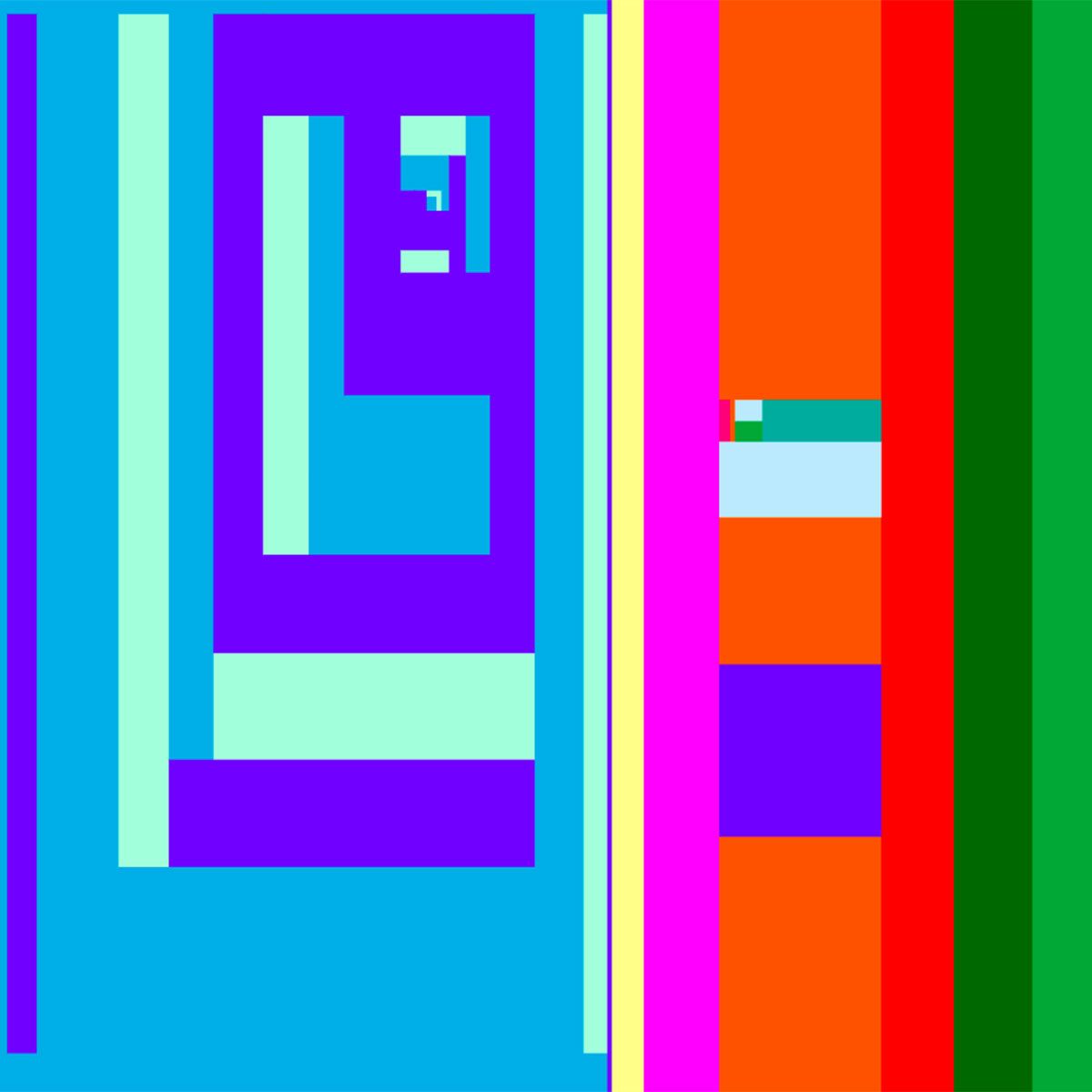
What if the internet was a painting?
Rafaël Rozendaal and Danny Wolfers (aka Legowelt) have collaborated on this project. Both have long-running independent careers in art. Legowelt's music and animation explores lo-fi, nostalgic, 90s aesthetics. In an interview, he noted the parallels between the generative NFT space and the “ 90s Amiga cracktro demo scene cyberpunk ethos…an amalgamation of deep magic coding, visuals and music.”
For Polychrome Music, Legowelt designed a generative music system inspired by early computer sound chips, demos, and game soundtracks on the Commodore 64 computer to accompany Rozendaal’s colorful, geometric animation works. An infinite composition is played on three different audio channels, each with its own synthesizer—new sounds are randomly generated by remixing the source melodies every time the NFT is clicked on. At times the animation moves exactly alongside every note of music, while at other times it lags a little behind or precedes it. The abstraction of Polychrome calls for active engagement. It's a reminder that, for art to exist, the audience member is just as important as the work itself.
Although the sequences of colors, patterns, and tones are randomly generated, they all seem to synesthetically fit together perfectly, as if they were meticulously chosen by a human instead of an AI. It’s easy to project onto a given Polychrome because of the vibes that each invokes—be that film noir (for the black and white ones), springtime, hacker aesthetics, blood cells, or cell mitosis.
6. Eternal Rose (2022) by notsofast
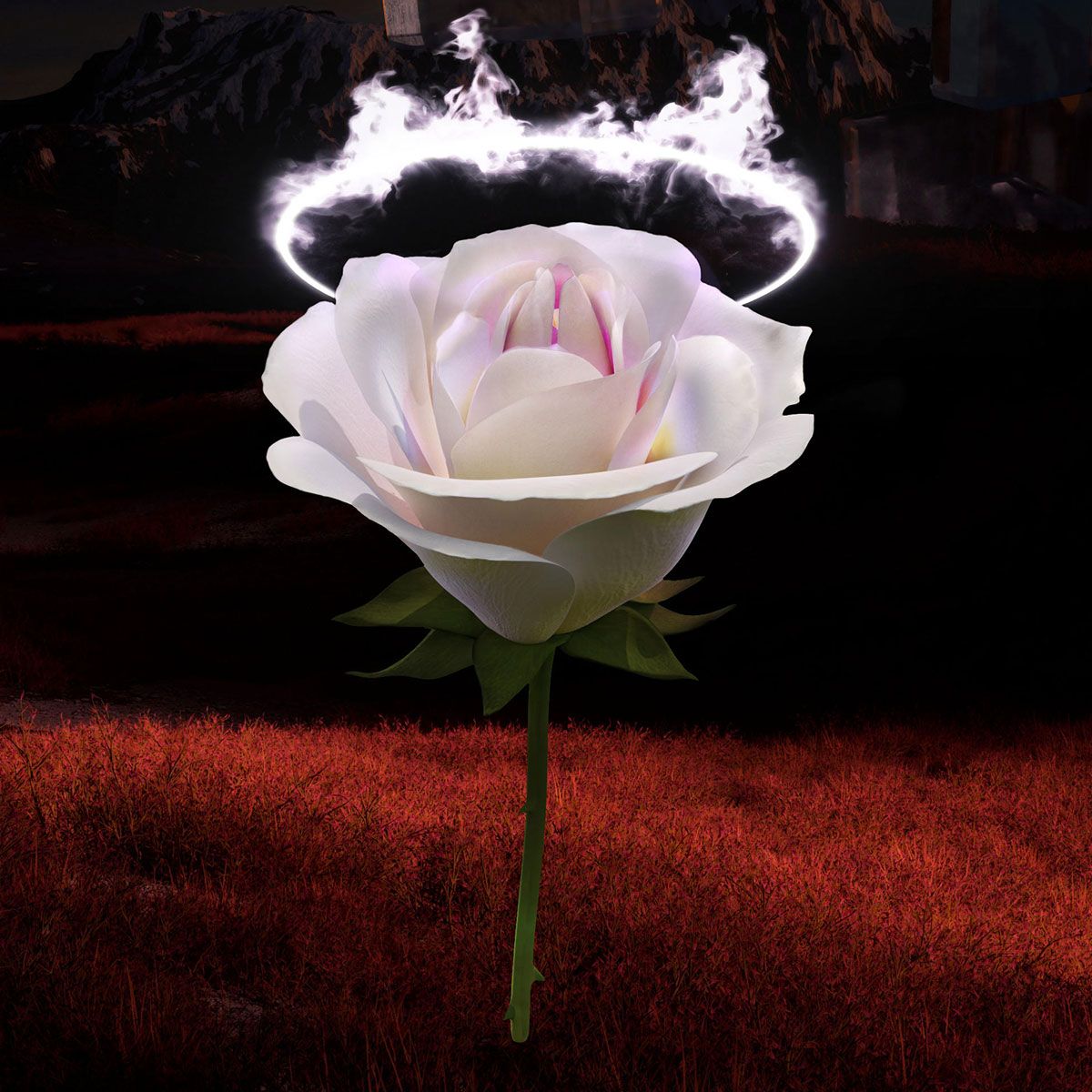
The rose looks fair, but fairer we it deem
For that sweet odour which doth in it live
Shakespeare, “Sonnet 54”
A real rose will wilt within a week, and the average relationship will apparently last two years and nine months, but notsofast’s mesmerizing Eternal Rose NFT will last as long as the Ethereum blockchain.
Our favorites include Eternal Rose 1061, against a simple beach backdrop, with a halo of fire above it, Eternal Rose 904, with a smokey pink and white sword above it, seemingly referencing the Ciceronian Sword of Damocles, and Eternal Rose 688 which floats against a red wheat field, setting its crops aflame.
Like any cliché, the rose is both enchanting and boring, irritating and powerful, exhausting and compelling. Roses are fragrant yet menacing. They have come to symbolize achievement and perfection. But they also symbolize the complicated nature of experience, whereby beauty and grace are painful to achieve, and thorny obstacles stand in the way of our goals.
In Ancient Greece, the rose was associated with Aphrodite, who, in the Iliad, protects the body of Hector using the “immortal oil of the rose.” In many pre-Christian traditions it was customary to hang a rose over secret meetings or gatherings—hence the use of “sub-rosa” (literally “under the rose”) to mean confidential. Initiates into these societies wore roses during ceremonies to indicate that they would keep inviolate any secrets that were passed on to them. Even the Christian rosary comes from roses. Roses have been used in heraldry, badges, and coats of arms for centuries. The Wars of the Roses were a series of conflicts during the fifteenth century that involved most of the English nobility. The House of York’s heraldic badge bore a white rose while the House of Lancaster’s was red. Of course, there is Disney’s Enchanted Rose in Beauty and the Beast—it is only if the beast learns how to truly love another before the last petal falls that he can be transformed back into a handsome prince.
Instead of getting someone a soon-to-be wilted rose, you can get them a white Eternal Rose. The white rose usually stands for innocence and purity but also silence, secrecy, and reverence. But be careful, for the sweetest rose can conceal the darkest poison!
7. Joe Pease
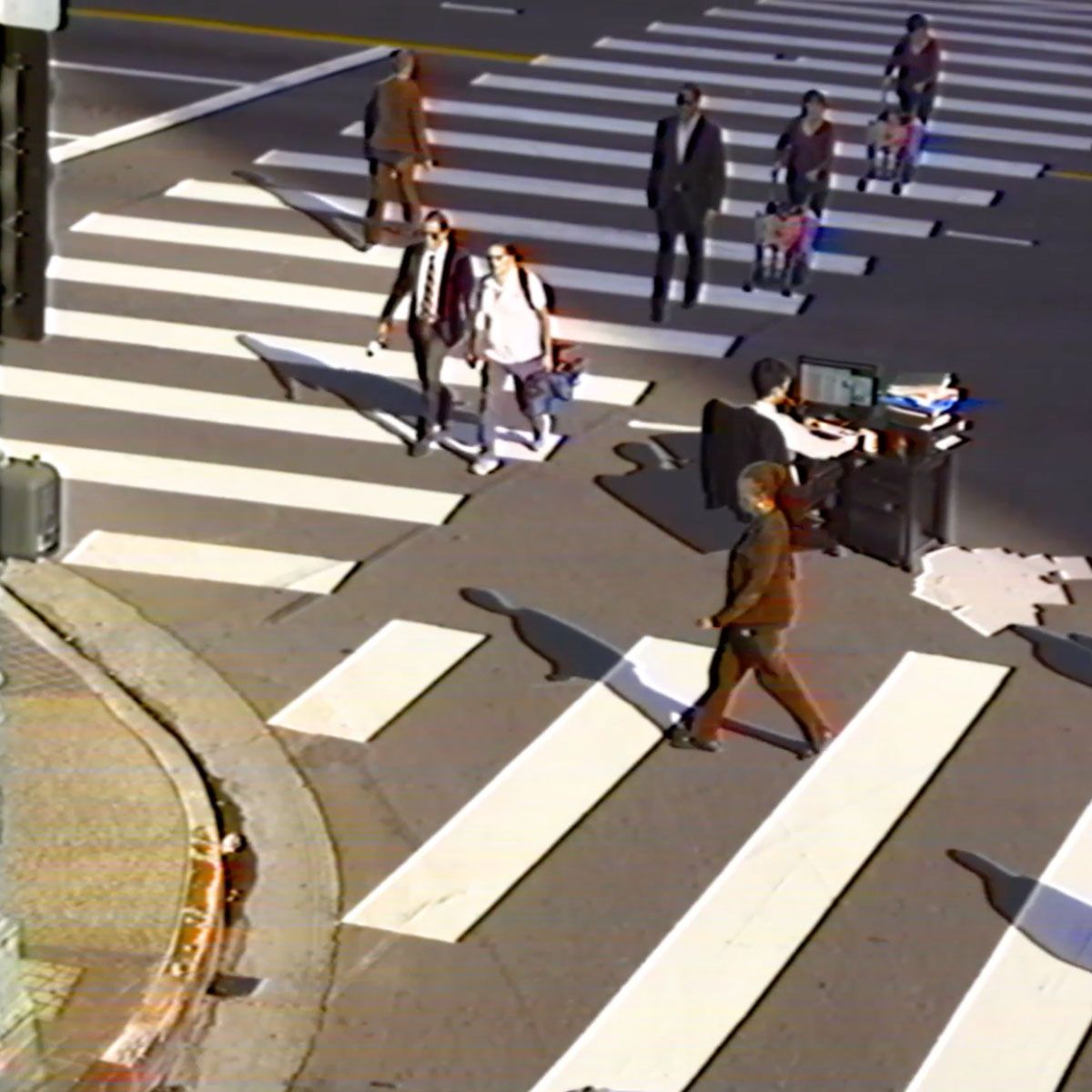
Joe Pease’s interest in art emerged along with his interest in skateboarding and skate videos. This makes sense when you look at his hypnotic, magnificently chopped and screwed video loops. His works contain a surprising element that is not very common in NFTs: real footage of everyday life.
In Feedback System (2022), a man works at a desk in the middle of the street, his printer continuously spewing white pages onto the cement floor, ominous music blending in with the familiar city sounds. Women in strollers, buses, and people—some of them are clones of each other—walk by, completely unbothered. This is the absurdity of urban living, where we walk by strangers in severe distress—due to homelessness, abuse, mental illness, neglect—every day and must ignore them to hurry on in our own grind.
In Iteration ||||||||||||| (2022), birds and people are replicated in maddening loops set to a soothing and uplifting ambient track. Snaking fluidly across a street, the human formation resembles a gigantic, monstrous insect. And isn’t that what we are in the grander scheme of things?
These urban vignettes are an interrogation of movement: how do our daily movements define us, and what is their individual and collective symbolism? With their stark depiction of a world that is both fantastical, exquisitely moving, and numbingly mundane, Pease’s work reminds us of HBO’s How To With John Wilson, in which John Wilson works through some of his inner personal issues by insistently investigating the cityscape that surrounds him. There is more of a digital consciousness in Pease’s work, which comments on the feedback loop of algorithmically curated media and consumerism that increasingly defines not only the media we ingest but the person we are and become.
8. Shredders (2022) by Zak Krevitt
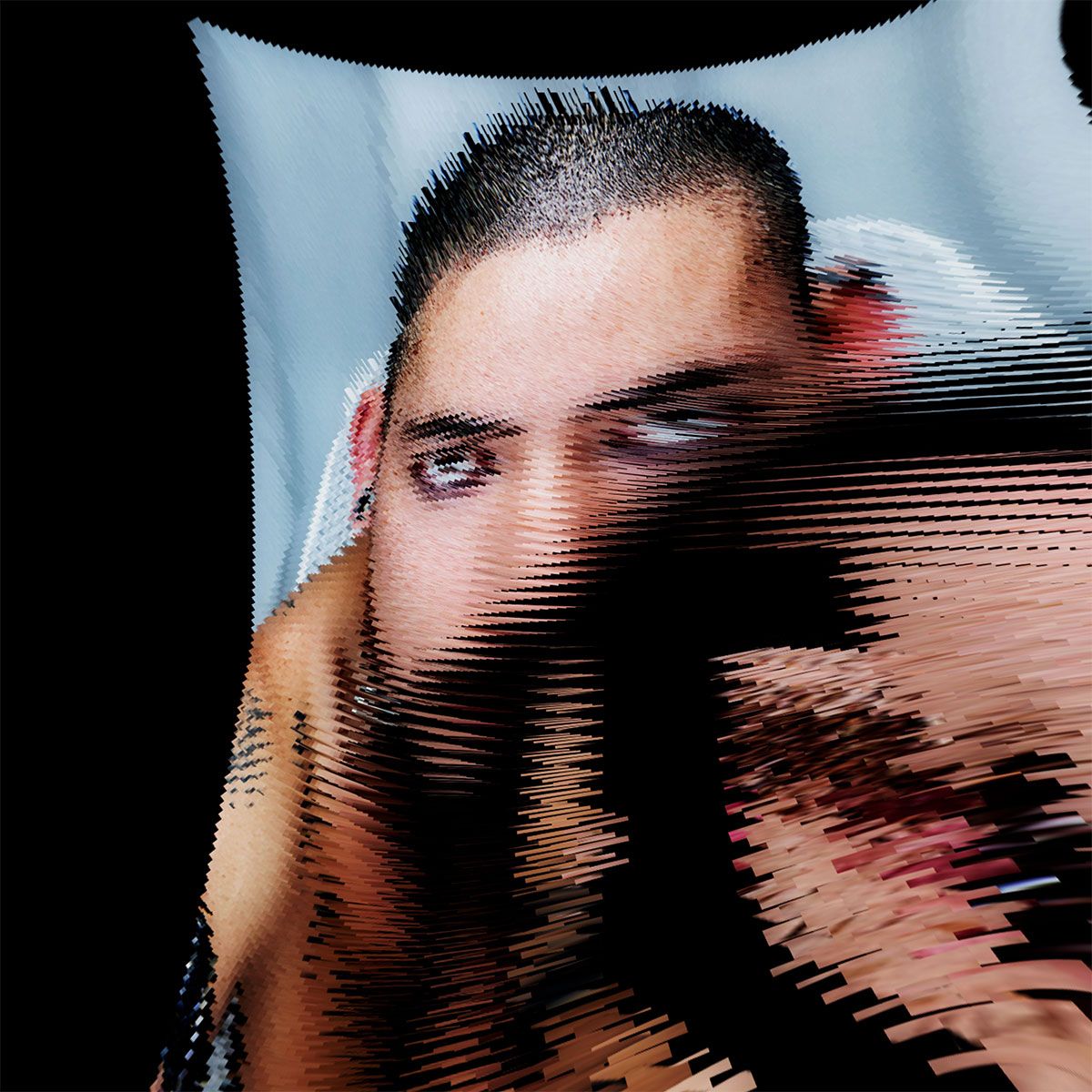
Zak Krevitt’s Shredders is an exploration of one single portrait, seen 150 ways. The portrait—originally taken for Standard Magazine in 2018—is of Fet Fet, a legendary club kid fixture of the GHE20G0TH1K and Lady Fag parties. And there is something reminiscent of the early Hood By Air days to this collection: gothic, deconstructed, and gay. Fet Fet’s black leather accessories and the mutability of his fractured face reference BDSM and the chaos of nightlife.
Shredders explores Krevitt’s ongoing interest in expansive and gender nonbinary identity. Here, they've used code to literally destroy the crystallized identity of a single person, exposing the fragmented nature of the self while destabilizing the experience of the viewer. Krevitt depicts the fixation that can take hold when you’re enthralled by one single person. But they also seem to be asking the viewer to take their own stagnant sense of self and put it through the shredder.
9. The Divers V: negative (left ortho) (2022) by Sophie Kahn

Sophie Kahn’s The Divers V: negative (left ortho) appeared in the Feral File exhibition Doppelganger, curated by Chris Coleman. The exhibition explores how digital selves or doppelgangers contradict, lay bare, and undermine our physical selves.
With The Divers V, Khan continues her probe into technology’s failure to capture the human body. The divers themselves, a 3D laser scan of two women in a cryptic embrace, are a recurring motif in Kahn’s work. The scanner is not designed to capture motion, so faced with a living, breathing body it flounders and can only provide jagged, fragmented shapes and edges.
In this iteration, a 3D animation of the silvery scan reveals its subject matter but then disappears, as if it were blinking. 3D printed sculptures were also included in the mint, providing different perspectives on the same file, which is never shown in its entirety, coyly eluding our grasp.
